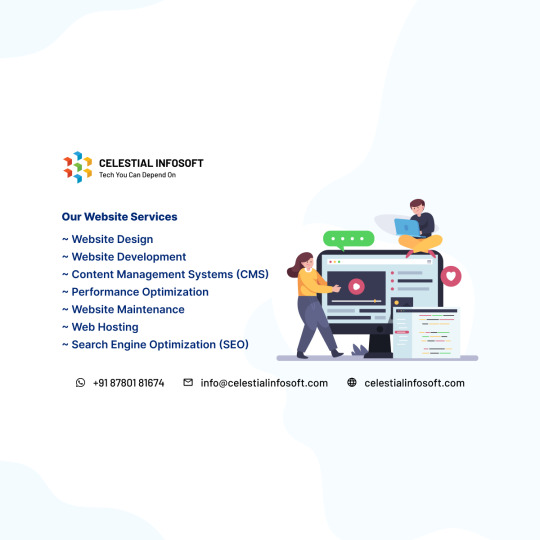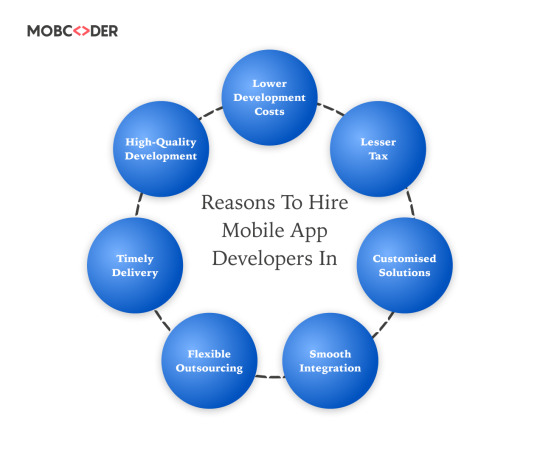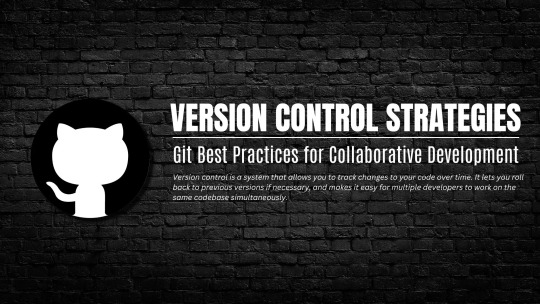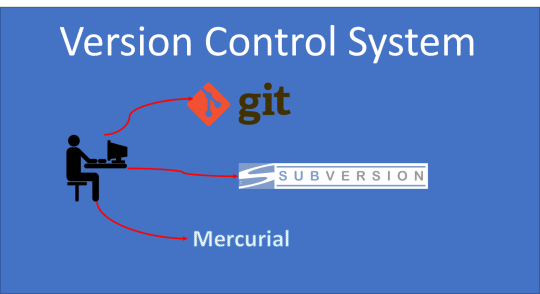#software development toronto
Explore tagged Tumblr posts
Text
Toronto’s Leading Software Development Company
We at Search Results Media maintain the highest quality standards throughout the development process, from conceptual design to final delivery. We have offered customized solutions for small and large-scale projects including ecommerce websites, bespoke ERP systems, and Business Intelligence analytics and reporting. To offer dependable software development services, we use cutting-edge technology and give a high degree of ease. To know more visit https://www.searchresultsmedia.com/services/software-development-companies-toronto/
#software development company toronto#software development toronto#custom software development toronto#custom software toronto#custom software development company in toronto#toronto custom software#best software development company in toronto
1 note
·
View note
Text
The Power of Content Marketing : Strategies For Success

Are you ready to harness the immense power of content marketing and take your business to new heights? Look no further! In this blog post, we will unveil the secrets behind successful content marketing strategies that are guaranteed to captivate your audience and skyrocket your brand’s visibility.
Get ready to unlock a world where compelling storytelling meets strategic promotion, as we explore how content marketing can transform your business into an unstoppable force in today’s digital age. So buckle up, because we’re about to embark on an exhilarating journey towards unparalleled success!
INTRODUCTION
Content marketing has become an essential aspect of modern marketing strategies. From small businesses to large corporations, companies are utilizing content to connect with their target audience and drive business success. In today’s digital age, where consumers are bombarded with advertisements and promotions, content marketing offers a unique approach to engage with customers and build long-lasting relationships.
What is Content Marketing?
At its core, content marketing is the creation and sharing of valuable, relevant, and consistent content to attract and retain a clearly defined audience. It involves using various forms of media such as blogs, videos, social media posts, infographics, podcasts, etc., to provide informative or entertaining content that resonates with your target audience. The goal of content marketing is not to explicitly promote a product or service but rather establish credibility and trust with potential customers.
Why is Content Marketing Important?
The power of content marketing lies in its ability to create meaningful connections between brands and consumers. By providing valuable information or entertainment through your content, you can establish yourself as an industry expert and build trust among your target audience. This trust translates into brand loyalty and increased sales in the long run.
Moreover, traditional advertising methods have become less effective due to the rise of ad blockers and consumer skepticism towards traditional ads. On the other hand, quality content that is genuinely helpful or entertaining can break through this noise and capture the attention of potential customers.
– EXPLANATION OF WHAT CONTENT MARKETING IS
Content marketing is a powerful tool for businesses to attract and engage with their target audience. It involves creating valuable and relevant content that addresses the needs and interests of your target market. This content can take various forms such as blog posts, videos, infographics, social media posts, podcasts, e-books, webinars, and more.
At its core, content marketing is about building trust and credibility with your audience by providing them with valuable information rather than constantly promoting your products or services. It aims to educate and inform rather than sell directly. By consistently delivering high-quality content, businesses can establish themselves as thought leaders in their industry and earn the trust of their potential customers.
One of the key elements of successful content marketing is understanding your target audience. You need to have a clear understanding of who they are, what they care about, where they spend their time online, what kind of content resonates with them, and what motivates them to take action.
Once you have a solid understanding of your target audience, you can create a comprehensive content strategy that aligns with their interests and needs while also supporting your business goals. Your strategy should include defining the types of content you will create (e.g., blog posts vs. videos), the platforms you will use (e.g., website vs. social media), how often you will publish new content, and how you will measure success.
IMPORTANCE AND BENEFITS OF CONTENT MARKETING FOR BUSINESSES
Content marketing has become an essential tool for businesses looking to establish a strong online presence and drive conversions. It involves creating and sharing valuable, relevant, and consistent content to attract and retain a clearly defined target audience. In today’s digital landscape, where consumers are bombarded with advertisements and promotions, content marketing offers a more subtle approach to building brand awareness and credibility.
The importance of content marketing for businesses cannot be overstated. Here are some key benefits that make it an indispensable part of any marketing strategy:
1. Establishes brand authority and credibility: By consistently publishing high-quality content that addresses the pain points of your target audience, you can position yourself as an expert in your industry. This helps build trust with potential customers, making them more likely to choose your products or services over competitors.
2. Boosts search engine rankings: Search engines like Google value fresh, relevant content when ranking websites. By regularly updating your website with valuable blog posts, videos, infographics, etc., you can improve your search engine optimization (SEO) efforts and increase your visibility online.
3. Drives traffic to your website: Quality content attracts visitors to your website who would not have found you otherwise. When people find helpful information on your site that meets their needs, they are more likely to explore other pages on your site and potentially convert into customers.
IDENTIFYING YOUR TARGET AUDIENCE
Before diving into the world of content marketing, it is crucial to first identify your target audience. The success of your content marketing strategy heavily relies on understanding and catering to the needs and preferences of your target audience. By identifying your target audience, you can create content that resonates with them, captures their attention, and ultimately drives conversions.
In this section, we will discuss some key steps to help you identify your target audience:
1. Define Your Product or Service: The first step in identifying your target audience is to clearly define what product or service you are offering. This will help you understand the type of people who would be interested in what you have to offer.
2. Conduct Market Research: Once you have defined your product or service, it’s time to conduct market research. This involves gathering data about your potential customers such as their demographics (age, gender, income), interests, behavior patterns, and purchase habits.
3. Analyze Your Current Customers: Another helpful way to identify your target audience is by analyzing your current customer base. Look at who is already buying from you and try to find common characteristics among them.
4. Create Buyer Personas: A buyer persona is a semi-fictional representation of your ideal customer based on market research and real data about existing customers. It helps put a face and personality behind the demographics and behaviors of your target audience.
– WHY KNOWING YOUR AUDIENCE IS CRUCIAL FOR SUCCESSFUL CONTENT MARKETING
Knowing your audience is one of the key elements for successful content marketing. In today’s fast-paced digital world, it is not enough to simply create and distribute content without understanding who your target audience is. With so much noise and clutter on the internet, it is crucial for businesses to tailor their content specifically to their target market in order to stand out and effectively communicate their message.
So why exactly is knowing your audience so important for successful content marketing? Let’s delve into some of the reasons:
1. Targeted messaging: By understanding your audience, you can create more targeted and relevant messaging that resonates with them. This means taking into account factors such as demographics, interests, pain points, and values of your target market. By crafting messages that are specific to their needs and preferences, you are more likely to capture their attention and engage them with your content.
2. Higher conversion rates: When your content speaks directly to your audience’s needs or problems, they are more likely to take action on it. This could mean making a purchase, signing up for a service, or subscribing to your newsletter. By addressing their pain points and offering solutions through your content, you establish trust with your audience which can lead to higher conversion rates.
METHODS FOR IDENTIFYING AND UNDERSTANDING YOUR TARGET AUDIENCE
When it comes to content marketing, one of the key factors for success is understanding and effectively targeting your audience. Without a clear understanding of your target audience, your content may not resonate with them and fail to drive engagement or conversions. This is why it is crucial to use methods that can help you identify and understand your target audience.
1. Conduct thorough market research: The first step in identifying and understanding your target audience is conducting thorough market research. This involves gathering data on demographics, interests, behaviors, preferences and pain points of potential customers. Market research can be done through surveys, focus groups, interviews, or by analyzing data from online tools like Google Analytics.
2. Utilize social media analytics: Social media platforms are a goldmine for valuable insights about your target audience. By using analytics tools provided by various social media platforms such as Facebook Insights or Twitter Analytics, you can gain valuable information about your followers such as their age, gender, location, interests and more.
3. Monitor website traffic: Your website visitors can also provide valuable insights into your target audience. Tools like Google Analytics can track the behavior of visitors on your website including pages they visit most frequently, time spent on each page and their journey before leaving the site. This information can help you understand what type of content resonates with them.
SETTING GOALS AND OBJECTIVES
In order to have a successful content marketing strategy, it is crucial to set clear and specific goals and objectives. These will serve as the foundation for your entire content marketing plan and guide you towards achieving success.
1. Identify Your Overall Marketing Objectives: The first step in setting goals for your content marketing is to identify your overall marketing objectives. This could include increasing brand awareness, generating leads, driving website traffic, or boosting sales. Having a clear understanding of what you want to achieve through your content will help you create more targeted and effective campaigns.
2. Make Your Goals SMART: Once you have identified your overall objectives, it is important to make them SMART – Specific, Measurable, Achievable, Realistic, and Time-bound. This will give you a clear roadmap for what needs to be done and when it should be accomplished by.
3. Define Your Target Audience: In order for your content marketing efforts to be effective, they need to resonate with your target audience. Take the time to define who your ideal customers are – their age, interests, pain points, etc. This will help you create content that speaks directly to them and encourages engagement.
– ESTABLISHING CLEAR GOALS AND OBJECTIVES FOR YOUR CONTENT MARKETING STRATEGY
When it comes to content marketing, having a clear set of goals and objectives is crucial for creating an effective strategy. Without a solid understanding of what you want to achieve with your content, it can be difficult to measure success and make necessary adjustments. In this section, we will discuss the importance of establishing clear goals and objectives for your content marketing strategy and how to do so effectively.
1. Define Your Target Audience: The first step in setting up any successful marketing strategy is identifying your target audience. This includes understanding their demographics, interests, pain points, and behaviors. By clearly defining your target audience, you can create content that resonates with them and addresses their specific needs.
2. Identify Your Objectives: Once you have a clear understanding of who you are targeting with your content, it’s time to establish the objectives you want to achieve through your content marketing efforts. These objectives could include increasing brand awareness, driving website traffic or leads, improving customer engagement and retention, or showcasing thought leadership within your industry.
3. Set SMART Goals: A great way to ensure that your goals are realistic and achievable is by following the SMART criteria – Specific, Measurable, Attainable, Relevant and Time-bound. This means setting specific targets such as increasing website traffic by 20% in the next six months or generating 50 new leads per month through content.
– HOW TO MEASURE SUCCESS AND TRACK PROGRESS TOWARDS YOUR GOALS
Measuring success and tracking progress towards your goals is a crucial aspect of any content marketing strategy. Without proper tracking, it can be difficult to determine if your efforts are effective or if you need to make adjustments. In this section, we will discuss some key steps for measuring success and tracking progress towards your content marketing goals.
1. Determine Your Key Performance Indicators (KPIs)
The first step in measuring success is to identify the key metrics that will help you track progress towards your goals. These metrics, also known as Key Performance Indicators (KPIs), should align with your overall business objectives and provide insight into the performance of your content marketing efforts.
Some common KPIs for content marketing include website traffic, conversion rates, email subscribers, social media engagement, and lead generation. Depending on your specific goals, you may have different KPIs that are more relevant to your business.
2. Set Realistic Goals
Before you can measure success, you need to establish clear and realistic goals for your content marketing strategy. These goals should be specific, measurable, attainable, relevant and time-bound (SMART).
For example, if one of your main objectives is to increase website traffic through content marketing by 20% in the next six months, this goal meets all the criteria of being SMART. Having well-defined goals will not only help you focus on what matters but also make it easier to track progress towards achieving them.
CREATING HIGH-QUALITY CONTENT
Creating high-quality content is essential for any successful content marketing strategy. In a sea of information and competition, it is crucial to produce content that stands out and engages your target audience. High-quality content not only helps to attract potential customers but also builds trust and credibility with your existing audience.
Here are some key factors to keep in mind when creating high-quality content:
1. Know Your Audience Before you start creating any type of content, it is important to have a deep understanding of your target audience. This includes knowing their demographics, interests, pain points, and preferred communication channels. By understanding your audience’s needs and preferences, you can tailor your content to effectively resonate with them.
2. Provide Valuable Information One of the main reasons people consume online content is to gain knowledge or solve a problem. Therefore, it is vital to provide valuable information in your content that addresses the needs or interests of your audience. This could include industry insights, how-to guides, informative articles or case studies.
3. Use Engaging Formats Content comes in various formats such as text, images, videos, infographics etc., and using different formats can make your content more engaging and appealing to different types of audiences. For instance, visual learners may prefer infographics while others may prefer video tutorials or podcasts.
– TIPS FOR SUCCESSFUL CONTENT MARKETING:
1. Know your target audience: Before creating any content, it is important to understand who your target audience is. Conduct market research and create buyer personas to get a better understanding of their needs, preferences, and behaviors. This will help you tailor your content to meet their specific needs.
2. Create high-quality and relevant content: Quality is key when it comes to content marketing. Your content should be informative, engaging, and valuable to your target audience. It should also be relevant to their interests and pain points, in order to capture their attention and keep them engaged.
3. Use different types of content: To appeal to a wider audience and keep them interested, use a variety of content formats such as blog posts, videos, infographics, podcasts, and social media posts. This will not only make your content more visually appealing but also cater to different learning styles.
4. Consistency is key: In order for your content marketing efforts to be successful, consistency is crucial. Develop a consistent posting schedule so that your audience knows when they can expect new content from you.
5. Incorporate SEO best practices: Utilize search engine optimization (SEO) techniques in your blog posts or website pages by including relevant keywords in your headlines, subheadings, and throughout the body of the text. This will make it easier for search engines like Google to find and rank your content.
CONCLUSION
In today’s digital age, content marketing has become a powerful tool for businesses looking to engage with their target audience and drive conversions. By implementing the strategies discussed in this article, you can effectively create and distribute valuable content that resonates with your audience and drives results.
Remember to stay consistent, track your progress, and adapt as necessary to see continued success in your content marketing efforts. Don’t underestimate the power of quality content – it truly is king in today’s competitive online landscape.
#The Power of Content Marketing : Strategies For Success#software development#web design#web development#multimedia / flash animation services#web design agency in toronto canada#web design company in mississauga#web devlopment#app development#graphic design#digital marketing agency canada#digital marketing#design
4 notes
·
View notes
Text
0 notes
Text
Custom Software Development Services Toronto | Haya Solutions

Revolutionize your business with the best software development solutions Toronto. Haya Solutions provides bespoke web, mobile, and enterprise software solutions for driving efficiency and growth. Visit our services.
0 notes
Text
Top 8 Benefits of Choosing a Professional Software Development Company in Toronto
Toronto has quickly established itself as a leading technology hub attracting businesses of all sizes. Whether you’re a startup seeking rapid growth or an established company aiming for digital transformation, finding the right software partner can be crucial. Professional software development companies in this vibrant city offer a comprehensive blend of technical expertise, innovation, and business acumen. In this article, we’ll explore eight major benefits of entrusting your project to a professional team in Toronto.
1. Access to Skilled Talent
Toronto boasts a diverse pool of tech talent. This city is home to renowned universities and coding boot camps that continuously produce top-notch developers, designers, and project managers. By partnering with a professional software development firm, you gain access to a well-rounded team skilled in cutting-edge technologies. This collective expertise ensures that your project benefits from innovative solutions, robust architecture, and an efficient development cycle.
Moreover, professional companies often maintain a rigorous hiring process to secure the best talent. This means you’ll collaborate with developers who have proven track records and specialized skill sets. Having a dedicated group of experts also streamlines communication, enabling prompt feedback and continuous improvements throughout the development process.
2. Customized Solutions for Your Business
A seasoned custom software development company in Toronto understands the significance of tailored solutions. Every organization has unique processes, products, and target audiences. Off-the-shelf software might address some needs, but rarely fits perfectly without compromise. A custom solution ensures that your application, platform, or website aligns perfectly with your business goals.
These companies employ an agile methodology, gathering feedback at each stage and adjusting features as necessary. By taking this approach, they create a product that evolves with your requirements. As market demands change, your software can be easily scaled or updated, ultimately giving your organization a competitive edge.
3. Rigorous Project Management
Professional software development firms in Toronto employ project management best practices, ensuring your vision is realized on time and within budget. They often use methodologies like Agile or Scrum, which promote continuous collaboration, iterative development, and rapid testing cycles. This structured approach reduces errors, clarifies requirements early, and helps keep everyone on the same page.
4. High-Quality Standards
Quality assurance is integral to professional software development. From the initial planning stages to post-launch support, these firms uphold strict standards to deliver robust, reliable products. Automated testing, code reviews, and performance optimizations are part of the standard workflow, ensuring that your software runs smoothly under real-world conditions.
A well-crafted product reflects positively on your organization. When glitches and bugs are minimized, user satisfaction skyrockets. Beyond the immediate technical advantages, this level of professionalism enhances your brand’s reputation, instilling trust in clients, stakeholders, and end users.
5. Scalable and Future-Proof Solutions
Business requirements often evolve over time. A software product that can’t grow with your company can hinder progress. Professional firms design scalable architectures that can accommodate increasing data loads, user bases, and new feature requests without compromising performance.
6. Enhanced Security and Compliance
Data security breaches can be devastating — both financially and reputationally. Professional development teams implement rigorous security protocols from the onset, integrating best practices like data encryption, secure coding, and regular vulnerability assessments. They are also well-versed in compliance standards (e.g., GDPR, HIPAA) that may apply to your industry.
7. Cost-Effectiveness in the Long Run
While hiring a professional software company might seem like a significant investment initially, it often proves cost-effective in the long haul. High-quality code reduces the need for extensive maintenance down the road, minimizing expensive patches or complete redesigns. Moreover, these firms typically provide ongoing support packages, ensuring that your software continues to perform optimally after deployment.
The efficiency gained through expert project management, streamlined communication, and targeted development practices also translates into financial savings. By addressing potential issues early, you avoid surprises that can disrupt timelines and inflate budgets.
8. Competitive Advantage in a Growing Market
Toronto’s tech scene is competitive, and partnering with a top-tier development team can set you apart. The best software company in canada will not only build a robust solution but also offer strategic consulting to optimize user experience, market positioning, and monetization. This well-rounded approach helps your product stand out in a crowded landscape, driving customer acquisition and retention.
Choosing a professional software development company in Toronto is a strategic decision that directly impacts your organization’s digital growth. From access to world-class talent and custom-built solutions to robust security and scalability, the benefits are clear. You gain not just a high-quality product but also a trusted partner invested in your success. With transparent communication, expert guidance, and long-term support, you can confidently navigate the fast-paced tech landscape and foster sustainable growth.
Whether you’re launching a new application or upgrading existing systems, Toronto’s professional development scene offers plenty of expertise and innovation. By securing the right partnership, you’ll be well on your way to elevating your business processes, enhancing customer experiences, and thriving in a constantly evolving marketplace.
0 notes
Text
How To Conduct Effective Logo Design Research

Logo design is an essential element of branding that captures the fundamental nature of a company or an individual in a solitary visual depiction. A proficient logo is more than just a work of art; it is a strategic instrument that communicates a brand’s identity, values, and mission. Even before you start the creative process of logo design, it is important to conduct a comprehensive research and gather sources of inspiration. This initial phase guarantees that the ultimate design connects with the intended audience and distinguishes itself in a competitive market. This blog will examine different strategies and techniques that are generally used for performing efficient logo design research and approaches for collecting inspiration. The step by step strategies for conducting efficient logo design research, its methods for research and collecting inspiration can guide the designers to produce logos that possess both aesthetic appeal and have a significant influence.
Comprehend The Essence and Identity of The Brand
Before undertaking a logo design job, it is important to gain a comprehensive understanding of the brand. This entails exploring the brand’s objectives, mission, values, and historical background. A thorough comprehension of the brand will direct the design process and guarantee that the logo precisely mirrors the brand’s identity. To understand the brand, one must actively involve themselves in the company’s goal statement, its narrative, its future vision, brand’s core values and principles. The question should include: Who are the intended customers? What specific feelings should the logo elicit? These basic comprehensions can establish a strong base on which the design can be constructed, guaranteeing that each component of the logo has a specific purpose and is in complete harmony with the brand’s fundamental statement.
Target Audience Analysis
Understanding the target audience is essential when designing a logo that deeply connects with them. Engaging in audience research increases comprehension of the inclinations, cultural subtleties, and curiosities of the intended target audience. Audience research can be done using methods like surveys, focus groups, or social media analysis. The accurate comprehension of the demographic characteristics, including age, gender, income, and lifestyle preferences, facilitates the customization of the logo design to appeal and attract the target audience. For example, the appearance of a logo designed for a government organization will be significantly different from the logo of a children’s toy brand. The objective is to develop a design that effectively communicates with the consumer at an emotional and psychological level.
Collect Visual Stimuli For Inspiration
Gathering visual stimuli for artistic procedure can encompass a wide range of subjects, including art, architecture, nature, historical monuments, local birds or even the culture. A mood board can be compiled to assist in categorizing various sources of inspiration and igniting fresh concepts. A mood board is a compilation of visuals, including images, colors, textures, and typography, that is intended to bring out the desired aesthetic and emotional response for the logo. This will function as a visual point of reference throughout the design process. The designers can also utilize platforms such as Behance and Pinterest, utilize actual cuts from publications, to gather and organize their sources of inspiration. This visual analysis will aid in discovering recurring motifs and artistic techniques that can be integrated into the logo design, ensuring its distinctiveness and aesthetic appeal.
For more details visit us at How To Conduct Effective Logo Design Research - THE IT CART
#theitcart#theitcart canada#theitcart mississauga canada#web solutions#marketing#marketing solutions#digital marketing#SEO Services#Social Media Marketing#Automotive Digital Marketing#Development Services#Website Development#Software Development#Mobile Application Development#Branding services#Logo Design#Graphic Design#digital transformation#seo services#seo agency#seo company#seo toronto#seo company toronto#seo marketing#seo tools#google seo#local seo#seo agency toronto#seo definition#seo engine optimisation
1 note
·
View note
Text

Struggling to find the perfect software for your Toronto business? Shiv Technolabs offers tailored custom software solutions designed to enhance your operations and drive growth. Our expert team crafts innovative, efficient software tailored to your specific needs, helping you overcome challenges and seize opportunities. Whether you need a new application or an upgrade to existing systems, our solutions are engineered to optimize your business processes and deliver results. Partner with us to transform your business with cutting-edge and custom software development services in Toronto.
0 notes
Text
https://www.dotit.io/post/small-website-development-costs-in-canada
#web development#website#website development#website optimization#website traffic#website seo#web design#website design#wordpress development#ecommerce website development#web developers#search engine ranking#search engine marketing#search engine optimization#search engines#canada#canadian gp 2024#webcomic#digital marketing#software development#game development#design#top executive search firms in india#toronto maple leafs#pwhl toronto#toronto blue jays#torontoartist
1 note
·
View note
Text


Affordable Website Development Service provided by Celestial Infosoft
We build all types of custom websites as per your requirements.
Send us a message at +91 87801 81674 and build your dream website
#business#entrepreneur#startup#ride share#financialfreedom#technology#usa#uk#canada#united states#toronto#new business#new build#software company in salem#software#information technology#opensource#website#development#website design#web development#web design#website development#wordpress development
0 notes
Text
#outsourcing in canada#outsourcing company#outsource#toronto digital marketing agency#torontocompany#seo in toronto#crm software canada#IT outsourcing#online business in toronto#ecommerce website development company
1 note
·
View note
Text
Best IoT App Development Services in Vancouver | Mobcoder
Mobcoder leads best IoT App Development Services in Vancouver, crafting innovative solutions to connect and transform businesses. Our expert team specializes in creating scalable and secure IoT applications that leverage cutting-edge technologies. From concept to implementation, we tailor solutions to your unique requirements, ensuring seamless integration and optimal performance. Whether it's enhancing operational efficiency or enabling smart experiences, Mobcoder's commitment to excellence guarantees a transformative IoT journey for your business. Partner with us to unlock the full potential of the Internet of Things and stay ahead in Vancouver's dynamic technological landscape.

#IoT App Development Services in Vancouver#IoT App Development Services in Toronto#IoT App Development Services#IoT App Development Service#Mobcoder#App Development#Software Development
0 notes
Text
Partner with the Leading IT Consulting Firm in Toronto for Unmatched Results
In today's world, where technology and innovation drive business success, finding a reliable partner for IT consulting, app development, web design, and software development services is crucial. That's where WeTheDevelopers comes in. As a leading IT consulting firm Toronto, we offer a range of services to help businesses of all sizes stay ahead of the competition.

At WeTheDevelopers, we understand the unique challenges businesses face in this fast-paced digital age. That's why we offer customized IT consulting services that are tailored to the specific needs of your business. Our team of experts will work with you to identify pain points in your business processes and suggest effective solutions that align with your goals and objectives. As one of the top IT consulting firms in Toronto, we are committed to delivering top-quality services that meet the highest industry standards.
Apart from IT consulting, we are also a leading, specializing in iOS, Android, and cross-platform app development. Our team of talented designers and developers use the latest tools and technologies to create stunning and user-friendly apps that cater to your target audience. Whether you need an app for your business or an idea that you want to turn into reality, we're here to help.
Boost conversions and engagement with our responsive websites
As a trusted web design company Canada, we help businesses create a strong online presence that effectively communicates their brand message and values. Our team of web designers and developers work closely with clients to create responsive and visually appealing websites that are optimized for search engines and user experience. We use the latest web technologies and frameworks to design websites that are both functional and aesthetically pleasing.
Finally, we also specialize in software development services. As a top software development company USA, we have the expertise to develop customized software solutions that meet the specific needs of your business. We follow a structured development process and have a team of experienced developers who use the latest tools and technologies to deliver high-quality software solutions that are reliable and scalable.
0 notes
Text

At our mobile app development company, we blend creativity and technology to craft cutting-edge mobile applications. Our team's expertise transforms ideas into user-friendly, intuitive apps that revolutionize the digital landscape. From concept to launch, we specialize in delivering customized solutions that meet the diverse needs of our clients. Join us on this journey of innovation and redefine the future of mobile experiences together. https://www.milliondev.com/mobile-app-development-toronto
#app development toronto#mobile app development services#application development toronto#software services toronto
0 notes
Text
Version Control Strategies : Git Best Practices For Collaborative Development
Welcome to the world of collaborative development where teams work together, code merges are frequent, and chaos can easily ensue. But fear not! In this blog post, we will unveil the secret sauce behind smooth and efficient collaboration: Git Best Practices for Version Control. Whether you’re a seasoned developer or just starting out on your coding journey, mastering these strategies will save you from countless headaches and bring harmony to your team’s workflow. So gather round, fellow developers, as we embark on a quest to discover the best practices that will elevate your collaboration game using Git!

WHAT IS VERSION CONTROL?
Version control is a system that allows you to track changes to your code over time. It lets you roll back to previous versions if necessary, and makes it easy for multiple developers to work on the same codebase simultaneously.
There are many different version control systems available, but Git is by far the most popular. GitHub is a great platform for collaborating on Git-based projects.
When you’re working on a project with other people, it’s important to have a solid version control strategy in place. Otherwise, things can quickly get out of hand.
Here are some tips for using Git in a collaborative development environment:
– Establish a clear workflow before starting work on the project. Decide who will be responsible for what, and how changes will be reviewed and merged into the main codebase. – Communicate with your team often. Discuss any potential conflicts before they happen, and make sure everyone is always up to date on the latest changes. – Use branches liberally. They allow you to experiment with new features without affecting the main codebase, and make it easy to revert changes if necessary. – Make frequent commits. This allows you to track your progress and makes it easier to roll back changes if something goes wrong. – Write descriptive commit messages. This will help everyone understand what each change was meant to achieve. – Use tags to mark key points in the development process (e.g., milestones, releases). This makes it easier to reference specific versions of the code.
THE BENEFITS OF VERSION CONTROL
Version control is a system that records changes to a file or set of files over time. This allows you to revert files back to a previous state, or compare changes over time. Version control is an important part of the software development process, and there are many different version control systems available.
Git is one of the most popular version control systems, and it has a number of benefits for collaborative development. Git is easy to learn and use, and it has a wide range of features. It is also open source, so anyone can contribute to its development.
Git can be used for both small and large projects. It is fast and scalable, so it can handle large projects with ease. Git also has excellent support for branching and merging, so developers can work on different parts of the codebase simultaneously without having to worry about conflicts.
Git is an excellent choice for version control in collaborative development environments. It is easy to use and learn, it has a wide range of features, and it is highly scalable.
INTRODUCING GIT
Git is a powerful tool for tracking changes in software projects. It is especially useful for collaborative development, as it allows multiple developers to work on the same project at the same time without losing track of each other’s changes.
In this section, we will introduce Git and show how it can be used to facilitate collaborative software development. We will cover the following topics:
What is Git? Git is a free and open source distributed version control system. It was created by Linus Torvalds, the creator of theLinux kernel, in 2005.
Git is designed to track changes in files and directories, and it is particularly suited for tracking source code changes in software projects. When used for collaborative development, Git allows multiple developers to work on the same project at the same time without losing track of each other’s changes. This makes it an ideal tool for team development of software projects.
Why use Git for collaborative development? There are many benefits to using Git for collaborative software development: u0007version control helps keep track of different versions of code; u0007 issue tracking can be used to manage bugs and features; u0007 commits can be used as a type of change log; u0007files can
INTRODUCTION TO THE COMMAND LINE INTERFACE (CLI)
The command line interface, or CLI, is a text-based interface used to control a computer or server. It allows users to type commands to execute programs or manipulate files and data. The CLI is typically used by developers and system administrators to automate tasks or troubleshoot problems.
Most operating systems include a CLI, which can be accessed via a terminal emulator program such as Terminal on macOS or PuTTY on Windows. Linux and Unix systems also include a shell, which is a program that provides an interface to the operating system. Common shells include bash, zsh, and fish.
Using the CLI requires some basic knowledge of commands and syntax. For example, the ls command lists the contents of a directory, while the cd command changes the current working directory. Commands can often be combined to perform more complex tasks; for example, the ls -l command will list the contents of a directory in long format, including permissions and timestamps.
Developers use the CLI to manage their code projects using version control systems such as Git. Version control allows developers to track changes to their codebase over time and easily revert back to previous versions if necessary. By tracking modifications with Git, developers can create different ‘branches’ of their project to experiment with new features without affecting the main code base. Developers can then ‘merge’ their changes back into the main branch when they’re ready to deploy them.
SETTING UP GIT IN YOUR PROJECT
There are a few different ways to set up Git in your project. You can use a GUI tool like SourceTree, or you can use the command line. If you’re using the command line, you’ll first need to install Git. Once Git is installed, you can initialize a repository in your project’s root directory with the following command:
git init
This will create a .git directory in your project, which is where Git will store its metadata. You can then add your files to the repository with the following command:
git add .
You can commit your changes with the following command:
git commit -m ‘Initial commit’
This will create an initial commit that is stored in the .git directory. You can then push your commit to a remote repository such as GitHub or Bit Bucket with the following command:
git push origin master
This will push the changes to the remote repository, and you should now be able to view your code in the remote repository.

WORKING WITH REMOTE REPOSITORIES
It can be difficult to know how to set up Git for a team when working with remote repositories. Here are some best practices to follow:
1. Use a central repository: A central repository is a shared location that all team members can access. This can be on a server somewhere, or even just a shared folder on Dropbox. The important thing is that everyone has access to it.
2. Use branches: When working with remote repositories, it’s important to use branches. This way, you can work on your own changes without affecting the main codebase. Then, when you’re ready, you can merge your changes back into the main branch.
3. Don’t commit directly to the master branch: The master branch should be considered the stable codebase that everyone works off of. If you make changes directly to it, it can cause problems for other people who are working on the same codebase. Instead, create a new branch for your changes, and then merge that branch into the master when it’s ready.
4. Communicate with your team: When you’re working with remote repositories, communication is key. Make sure everyone knows what changes are being made, and why. That way, if there are any problems, they can be quickly ironed out.
WORKING WITH BRANCHES
Working with branches is one of the most important aspects of using Git for collaborative development. In this section, we’ll cover some best practices for working with branches in a collaborative environment.
When creating a new branch, it’s important to give it a descriptive name that accurately reflects the changes you’re making. This will help other developers understand what the branch is for and make it easier to merge back into the main development branch later.
It’s also important to remember that branches are cheap and easy to create in Git, so don’t be afraid to experiment! If you’re not sure whether a certain change will work or not, create a branch and try it out. Once you’ve verified that the change works as expected, you can merge it back into the main development branch.
If you’re working on a complex feature that will take some time to complete, it’s often best to create a dedicated feature branch for it. This way, other developers can continue working on other parts of the codebase while you’re working on your feature. Once the feature is complete, you can merge your branch back into the main development branch.
COLLABORATIVE DEVELOPMENT WITH GIT
Git is a powerful tool for collaborative development. When used properly, it can help teams work together more effectively and efficiently. Here are some best practices for using Git in a collaborative environment:
1. Use a centralized repository: A centralized repository is the most efficient way to manage code changes and collaborate with others. It allows everyone on the team to have access to the latest code base and makes it easy to track changes.
2. Use branches: Branching is a great way to isolate changes and avoid potential conflicts. When working on a new feature or bug fix, create a new branch off of the main development branch. This will allow you to make your changes without impacting the main code base. Once your changes are complete, you can merge your branch back into the main branch.
3. Commit often: Committing your code regularly helps keep track of your progress and makes it easier for others to see what you’ve been working on. Try to commit at least once per day, or more often if possible.
4. Write clear commit messages: When writing commit messages, be clear and concise. Describe what changed in each commit so that others can easily understand what was modified.
5. Use tags: Tagging specific commits can be helpful for identifying significant changes or releases. For example, you could tag a commit when a new feature is completed or when a bug fix is released.
RESOLVING CONFLICTS IN NEW FILES AND MERGES
In a collaborative development environment, it’s inevitable that conflicts will arise from time to time. When two or more developers are working on the same codebase, there’s always the potential for one developer to make a change that conflicts with another developer’s change.
The good news is that Git provides a number of tools and strategies for resolving these conflicts. In this section, we’ll discuss some of the best practices for resolving new file conflicts and merge conflicts.
If you’re working on a project with other developers, it’s important to have a strategy for dealing with conflicts. Otherwise, you may find yourself stuck in an endless cycle of merge wars! By following some simple best practices, you can avoid most conflict situations altogether.
When two developers are working on the same codebase, it’s important to keep track of what each person is doing. The best way to do this is by using a version control system like Git. With Git, each developer has their own local copy of the codebase. They can make changes in their own copy without affecting others.
When a developer wants to share their changes with the rest of the team, they push their changes to a central repository. Other developers can then pull those changes down into their own local copies. If two developers make conflicting changes in their respective copies, Git will automatically detect the conflict and allow them to resolve it.
There are two main types of conflicts that can occur in a Git repo: new file conflicts and merge conflicts.
New file conflicts arise when two developers create a new file with the same name in different locations. These conflicts can be resolved by deleting one of the files, renaming it, or manually merging their contents.
Merge conflicts arise when two developers make changes to the same line of code in the same file. These can be more difficult to resolve since both changes must be merged into a single version of the file. The best way to resolve these is by reading through each change carefully and figuring out which version should remain in place. Alternatively, an accepted third-party merge tool can often help greatly with this type of conflict.
By properly managing your development process and using version control tools like Git, you can significantly reduce the chance of conflicting changes being made in the first place. And if conflicts do arise, having a plan for resolving them quickly is essential.
DEPLOYMENT STRATEGIES AND GIT WORKFLOWS
There are a variety of ways to manage code versioning and deployments, but Git provides a robust and widely used set of tools for tracking changes. In this section, we’ll discuss some best practices for using Git in collaborative development environments.
When working on code collaboratively, it’s important to have a strategy for managing branches and commits. In general, it’s best to keep your master branch clean and only commit changes that have been thoroughly tested. This way, you can avoid having to roll back changes or merge conflicting code.
One common workflow is to create a new branch for each feature or fix that you’re working on. Once you’re done with your work, you can merge the branch into the master branch. If there are any conflicts, you can resolve them before pushing the changes to the remote repository.
Another strategy is to use a gitflow workflow. This workflow uses two main branches: develop and master. The develop branch is where all of the day-to-day development work happens. When features are ready for release, they are merged into the master branch and tagged with a version number. This makes it easy to track which versions of your code are in production and identify which ones need to be deployed.
Ultimately, there is no single right way to use Git. The important thing is to find a workflow that works well for your team and stick to it. By following some simple best practices, you can make collaboration smoother and prevent major headaches down the road.
ALTERNATIVES TO GIT
There are many alternatives to Git for version control. Some of the most popular are Mercurial, Bitbucket, and SourceForge. Each has its own strengths and weaknesses, so it’s important to choose the right one for your project.
Mercurial is a fast, lightweight system that is easy to learn and use. It is ideal for small projects with a few developers. However, it does not have some of the advanced features of Git, such as branching and merging.
Bitbucket is a web-based service that offers both free and paid plans. It has robust collaboration features and integrates with a number of 3rd party services. However, it can be slower than other systems and has had security issues in the past.
SourceForge is a web-based service that offers free hosting for open source projects. It has a large user base and good community support. However, it can be difficult to use and lacks some of the features of other systems .
CONCLUSION
In conclusion, version control strategies are essential for successful collaborative development. Git is an excellent choice for projects requiring version control as it allows developers to track changes and collaborate on project files in real-time. By following our tips and best practices outlined in this article, your team can use the powerful features of Git to drive productive collaboration throughout their development cycle.
#Version Control Strategies : Git Best Practices For Collaborative Development#software development#web development#digital marketing#web design#web design agency in toronto canada#app development#digital marketing agency canada#graphic design#web devlopment#multimedia / flash animation services
1 note
·
View note
Text

Mississauga’s Trusted Software Development Partner – Haya Solutions
As a leading software company in Mississauga, Haya Solutions provides tailored software development, digital transformation, and IT consulting services to businesses of all sizes. Let us help you innovate, automate, and grow with cutting-edge technology.
0 notes
Text
#android app development#app development#app developers#app developing company#mobile app development#canada#nova scotia#toronto#ontario#ottawa#montreal#vancouver#app developers toronto#mobile app design bd#mobile app developer company#mobile app company#mobile app developers#web app development#web development#software development
1 note
·
View note